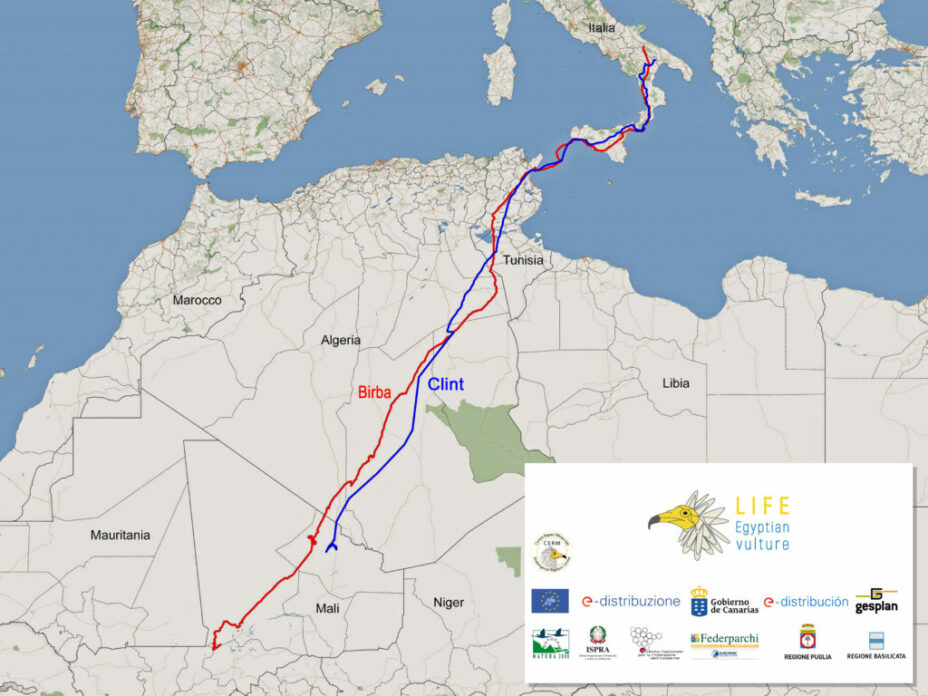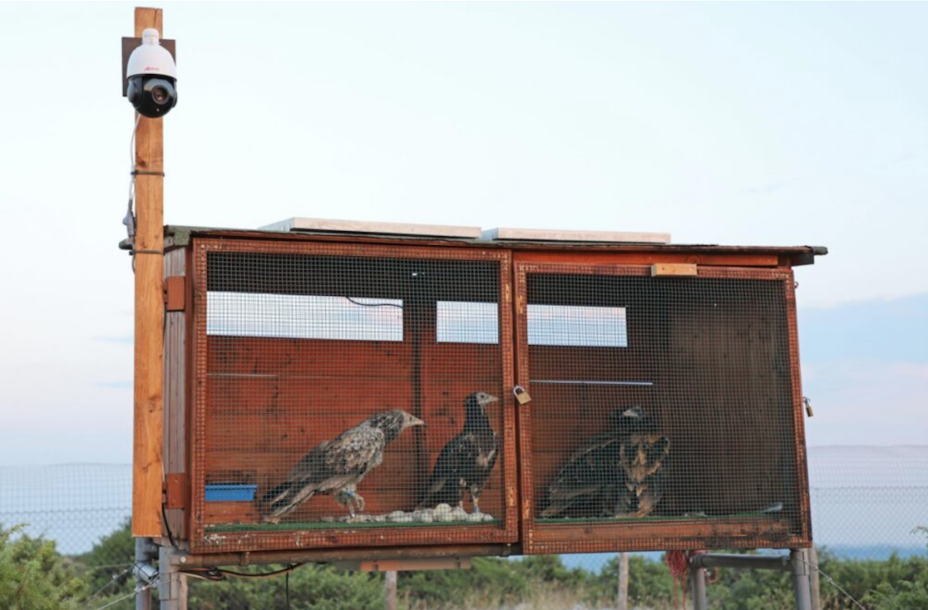Egyptian Vulture Italy
Restocking the endangered Egyptian Vulture population in Italy
- Homepage
- Pages
- Our Work
- Reintroduction And Restocking
- Egyptian Vulture to Italy
The Egyptian Vulture was once found all along Italy’s Tyrrhenian coast from Liguria to Calabria, but the distribution area of the species dramatically reduced in recent years. In 1970, there were 71 Egyptian Vulture pairs distributed in Tuscany, Lazio, Basilicata, Puglia, Calabria and Sicily while in 2008, only eight to nine pairs were remaining between Sicily, Basilicata and Calabria. The species suffered an estimated 80% decline in its population due to poaching, disturbance of nesting sites, reduction in their food supply and illegal poisoning. With the species being on the brink of extinction, the CERM Endangered Raptors Centre developed the Egyptian Vulture Project (Progetto Capovaccaio) to preserve their population by implementing concrete conservation actions.
TRACKING THEIR MOVEMENTS
Ahead of their release, the Egyptian Vultures are equipped with GPS tags, some provided by the VCF. These tags allow ISPRA, Biodiversità sas and the CERM Association to track the real-time movements of these birds via GPS/ GSM data, which also helps find the birds in the field and observe them directly when necessary, especially at areas that pose several threats.

The project works to mitigate threats and boost the local population of the species by adapting targeted conservation measures. These actions include developing and assessing captive breeding techniques, releasing young captive birds into the wild to boost their numbers and tackling the lack of safe food resources by managing supplementary feeding stations in sensitive areas. Since 2003, the CERM Association released 37 captive-bred Egyptian Vultures, testing three different release techniques: fostering (2003), which was negatively assessed and thus abandoned, hacking (2004-2019), which has given the best results up to now, and delayed-release (2017). Currently, there are less than an estimated 10-12 breeding pairs in Italy, eight in Sicily and three pairs around Basilicata and Calabria. The project will continue to breed birds in captivity to strengthen the captive stock, release vultures to the wild to increase their numbers and monitor and tackle threats they face to ensure their survival in Italy.
NUMBER OF BIRDS RELEASED
Since 2003, the project has released a total of 37 Egyptian Vultures from a captive background into the Italian countryside!

The Egyptian Vultures are usually equipped with GPS/GSM transmitters ahead of their release to the wild. Monitoring the birds is essential to attain crucial data to test procedures on the feasibility and relevance of captive-breeding and reintroduction projects with this species. This data also helps understand migration patterns, behaviour and foraging ranges, and helps identify threats. Essentially, trackers can help indicate a specific bird’s health and assist the project team in carrying out widespread actions that mitigate the threats, safeguard flight paths and support the comeback of these species in Italy. The Vulture Conservation Foundation (VCF) supports the monitoring efforts of the project by providing transmitters and bearing the cost of the Argos GPS satellite tracking system, with the funding and support of the MAVA Foundation.



